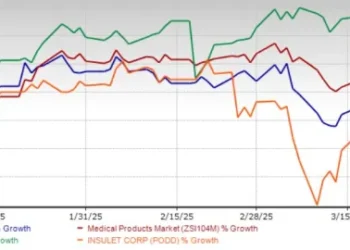The American healthcare system is quietly undergoing a financial transformation. As insurance premiums rise and administrative complexity deepens, more patients—and providers—are embracing direct pay or cash-based care models. This shift, often known as Direct Primary Care (DPC) or fee-for-service medicine, offers transparency and simplicity. But it also raises a key question: How can patients pay for care efficiently when insurance is no longer the middleman?
Enter the Health Savings Account (HSA)—a powerful, tax-advantaged tool that is rapidly gaining relevance in this evolving landscape.
The Financial Backbone of Direct Pay Healthcare
In traditional insurance-based models, healthcare costs are opaque and often disconnected from actual service delivery. Direct pay models, on the other hand, emphasize price transparency and upfront costs—but without insurance to defray expenses, patients need smarter financial strategies to manage payments. That’s where HSAs come in.
An HSA allows individuals with high-deductible health plans (HDHPs) to contribute pre-tax dollars, grow those funds tax-free, and withdraw them tax-free for qualified medical expenses. When paired with direct pay care, HSAs create a tax-efficient ecosystem for routine and chronic care spending.
Why HSAs Matter More Than Ever
With the rise of DPC and specialist cash-pay clinics, patients are more willing to pay out-of-pocket for high-quality, accessible care. Yet without insurance billing, they lose access to employer-based reimbursements and Flexible Spending Account (FSA) pipelines.
HSAs bridge this gap by:
- Reducing taxable income
- Providing liquidity for medical needs
- Allowing investment growth for long-term health planning
- Empowering patients to control their care choices without network limitations
And unlike FSAs, HSAs do not expire at the end of the year—making them ideal for both everyday expenses and long-term health savings.
Other Tax-Saving Mechanisms in Play
While HSAs are the most flexible and portable, several other mechanisms support direct-pay strategies:
- Medical Savings Accounts (MSAs): Available to self-employed or small business employees with HDHPs, MSAs offer similar tax benefits but are less commonly used due to stricter eligibility.
- Health Reimbursement Arrangements (HRAs): Employers can fund HRAs to reimburse employees for medical expenses, though these are not employee-owned and typically more useful in small-group DPC environments.
- Section 213(d) Deductions: Certain out-of-pocket medical costs not reimbursed through insurance or accounts like HSAs can still be deducted if they exceed a percentage of adjusted gross income.
These tools, though underutilized, can significantly reduce the financial burden of non-traditional healthcare approaches—especially for freelancers, gig workers, and small business owners.
Policy and Market Forces Aligning
As regulatory momentum grows for healthcare price transparency, federal interest in expanding HSA eligibility is also increasing. Recent bipartisan proposals aim to allow HSA use for direct primary care fees, telehealth services, and even nutrition counseling—all features commonly offered in direct pay practices.
If passed, these changes would further normalize cash-based care and position HSAs as central pillars of personalized, financially sustainable healthcare.
Final Thoughts
The rise of direct pay medicine isn’t just a rejection of insurance—it’s a return to value-driven care, where patients understand and control how their dollars are spent. But this freedom requires financial tools that are just as flexible and transparent as the care itself.
Health Savings Accounts—and related tax-saving mechanisms—aren’t just helpful add-ons. They’re essential infrastructure in the growing world of consumer-driven healthcare.
As more patients opt out of traditional coverage in favor of autonomy, it’s time we treat these accounts not as niche financial instruments, but as core components of modern health policy.















